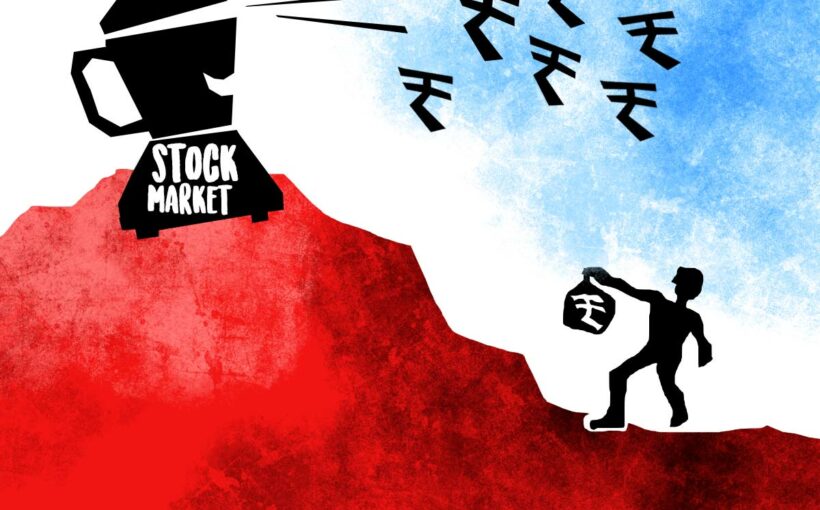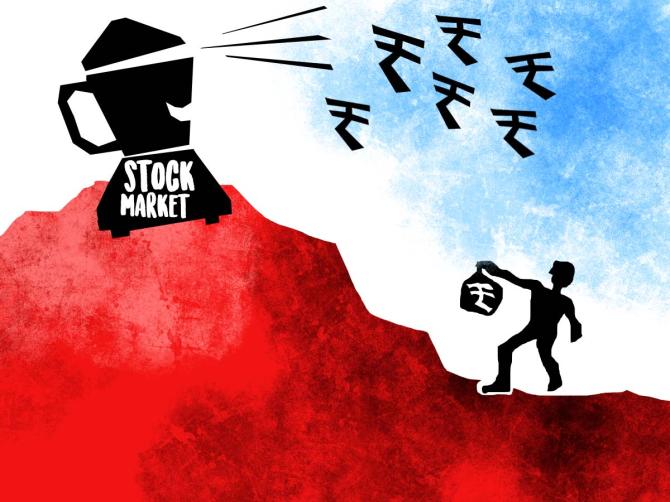Historically, March has been a volatile month for Indian equity markets.
To begin with, it marks the end of a financial year, wherein there is some compulsive portfolio rebalancing trade by large funds — domestic and foreign.
Retail investors, too, prefer to ‘cash in’ on their gains and losses before the financial year runs out.
Markets also look to price in potential growth in corporate earnings for the last quarter (fourth quarter) of the financial year and the guidance companies may give for the approaching financial year.
A look at the Nifty’s performance in the last month of the seven financial years, i.e., March 2016 through March 2022, shows median volatility of the National Stock Exchange benchmark index (Nifty VIX) at a staggering 11.4 per cent.
Volatility is calculated as the difference between the monthly high and low divided by median value.
If we were to exclude the extraordinary behaviour in March 2020, when the index swung in the range of over 40 per cent in a single month amid pandemic-prompted meltdown, the average volatility still stands at a solid 6.6 per cent.
Notwithstanding high volatility, the Nifty has ended higher in five of the last seven occasions.
If we exclude the sharp 23 per cent fall in March 2020, the average gains on the other six occasions stand at 3.9 per cent.
Thus far in March, the Nifty has shed 1.8 per cent amid fears that the US banking crisis could snowball into a bigger problem for the global financial markets, and the ensuing action by global central banks to contain the problem.
Most analysts expect the US Federal Reserve (Fed) to go easy on its rate-hike trajectory against the backdrop of the recent banking crisis the US is grappling with.
“If the Fed does not signal its commitment to fighting inflation, long-term inflation expectations are likely to become unanchored, which could lead to an accelerating wage-price spiral.
“We think that a 25-basis point rate hike on March 22 is most likely, despite turmoil in the banking sector,” says Philip Marey, senior US strategist, Rabobank International.
The road ahead
Will markets be able to regain lost ground before the month is over?
A lot, say analysts, will depend on the monetary policy of the Bank of England and the Fed over the next few days amid recent developments.
A positive turn of events in the latter half of the month, they observe, could be an ideal trigger for a sharp market rebound.
However, they do caution that the market rally, if any, could get sold into.
“We are not entirely out of the woods. The broader trajectory remains tentative.
“However, we may expect some near-term bounce.
“The recent swing low of 16,900-16,850 is likely to act as the sheet anchor’s role.
“On the flip side, 17,200-17,250 is the immediate hurdle for the Nifty, followed by the sturdy wall of 200-day simple moving average placed around the 17,400-17,450-odd zone,” says Osho Krishan, senior analyst for technical and derivatives research, Angel One.
The Nifty50, say analysts, has formed a downward-sloping channel by connecting the lower-highs and lower-lows formations.
After five days of selling, it took support from the lower end of the channel and formed a Doji candlestick pattern.
It respected that level on Friday trading, closing above levels of 17,100.
“If it manages to hold these levels, there is scope for a short-covering rally towards the 17,250 and 17,440 levels.
“On the downside, 17,000 will be the first support level, while 16,800 is a critical support level,” says Pravesh Gour, senior technical analyst, Swastika Investmart.
Source: Read Full Article

